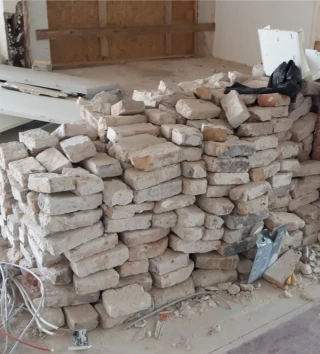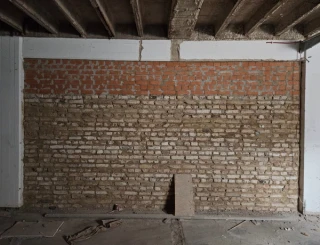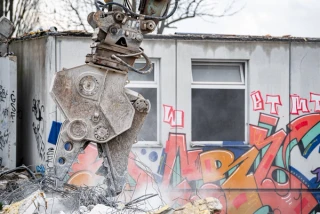circular construction
We are not primarily interested in how to assemble a building, but rather how to take it apart.
circular building and Cradle to Cradle
For us at Partner und Partner, circular construction has been the basis of our thinking and actions since the beginning. And the facts suggest that we are on the right track in terms of the future of our planet. The world population is growing, resulting in an enormous additional need for resources. This will lead to distribution issues and price increases on the globally networked raw materials markets. It is therefore not only sensible, but downright inevitable, to simply use resources instead of consuming them. This puts us as architects in a responsible position. Because the lever we hold is considerable - after all, construction causes around 40 percent of global emissions.

There is little to save?
But we have one problem: most of the resources that are tied up in buildings today can only be partially recovered as "urban mining" in the sense of the circular economy. Because they were never intended for reuse. This applies above all to post-war buildings, whose building materials cannot usually be separated into pure types. They are often contaminated or contain undefined ingredients. The attempt to reuse these raw materials will therefore only delay the problem of resource scarcity. These building materials will soon reach their end of life and become waste in the classic sense. In most cases, the first reuse already corresponds to downcycling: in their "second life", the building materials that we save today during conversion or demolition cannot usually be reused at the same quality level. Our options as architects are therefore extremely limited here - because the idea of a circular economy was not à la mode for many years.


Preserving values for future generations
We are therefore focusing more on the possibilities that we can offer future generations. Our central question is: How do we need to plan and build or rebuild buildings today so that the resources used there can be kept in circulation in the future - both in terms of materials and in terms of their monetary value. The goal: not to consume resources with our buildings, but simply to use them and preserve them for future generations. So there is something almost conservative about that. In this way, we want to reduce the demand for new primary raw materials and reduce CO2 emissions in the future. Buildings should become material banks instead of garbage dumps. To do this, we cannot avoid thinking about our projects from their end. We are first and foremost interested in how buildings can be dismantled again. So that their materials can ideally be reused at the same level. And this is the point we start from when we plan buildings.
We are fully aware of the damage we are doing: we are challenging the firmly established structures of an economic model that is based on the idea of consumption. We want to show that such a paradigm shift is possible and can be implemented in practice. This is how the construction industry should be transformed from a climate sinner to a climate protector.
